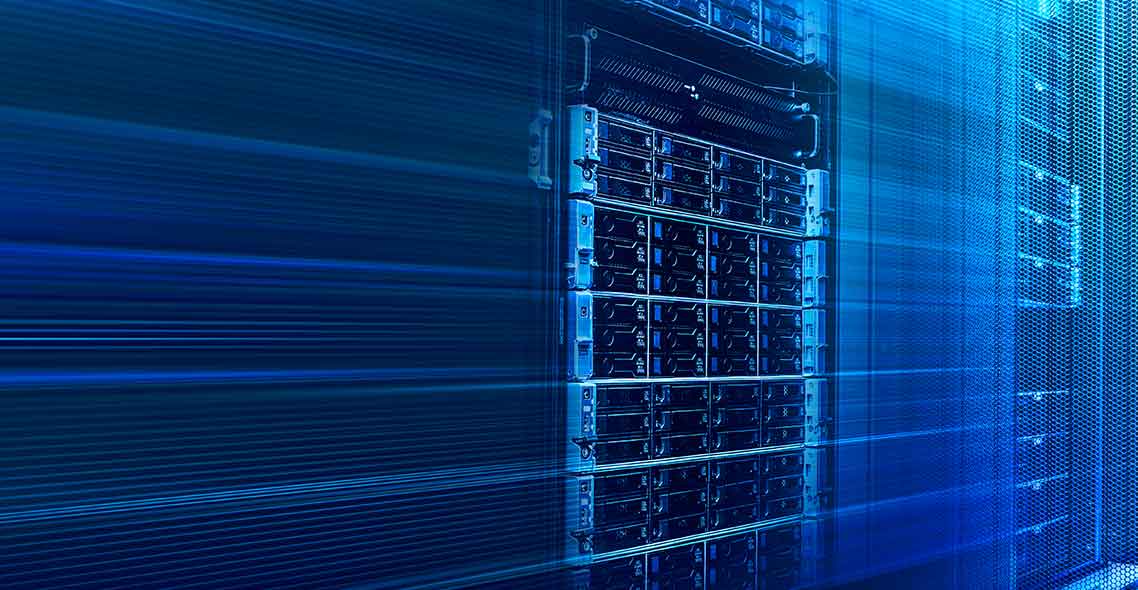
VDI Vs VHD Vs VMDK: Learn the Different Virtual Disk Formats
In virtualization, virtual disks are where guest operating systems are installed, making them the equivalent of traditional hard disks. Once a virtual machine has been installed with a virtual disk running a guest operating system, it is ready for use.
Virtual disks come in different formats, depending on what virtualization software the creator used to create them. The more popular virtual disk formats include Virtual Disk Image (VDI), Virtual Hard Disk (VHD), and Virtual Machine Disk (VMDK). VDI is the virtual disk format for Oracle VirtualBox, VHD and VHDX are designed for Microsoft’s virtualization products, and VMDK is VMware’s own virtual disk format.
VDI: Oracle’s Default Disk Format Used by Virtual Box
 VDI, which stands for Virtual Disk Image, is the bdefault disk format for the open-source Oracle VM VirtualBox, an actively developed, enterprise-class virtualization product. VirtualBox runs on macOS, Windows, Linux, and Solaris hosts, and supports various guest operating systems, including Windows, DOS, Linux, Solaris and OpenSolaris, OS/2 and OpenBSD. It supports even older Windows versions such as Windows 3.x, NT 4.0, 2000, XP, Server 2003 and Vista, making it suitable for development work among companies that continue to provide backward-compatible support for software built around these operating systems.
VDI, which stands for Virtual Disk Image, is the bdefault disk format for the open-source Oracle VM VirtualBox, an actively developed, enterprise-class virtualization product. VirtualBox runs on macOS, Windows, Linux, and Solaris hosts, and supports various guest operating systems, including Windows, DOS, Linux, Solaris and OpenSolaris, OS/2 and OpenBSD. It supports even older Windows versions such as Windows 3.x, NT 4.0, 2000, XP, Server 2003 and Vista, making it suitable for development work among companies that continue to provide backward-compatible support for software built around these operating systems.
If you are looking at using VirtualBox for your virtualization needs, you can pick from pre-built VMs at Oracle Tech Network. Since it is open-source, a wide range of support tools that can be used with the software is also available from the VirtualBox ecosystem.
Virtual disks created using VirtualBox have a .vdi file extension. VDI is portable and can be run using other virtualization programs. It allows both fixed-size and dynamically allocated storage. The latter means you can expand an image file after it has been created—even if it already contains data.
Unofficial tests affirm that VDI files are smaller and perform better than VHD or VHDX. However, VDI has been shown to be slower than VMDK. It also does not support incremental backups, but VMDK does. However, VDI does have high-level redundancy, lessening the impact of data loss on your VMs.
While VDI is specific to VirtualBox, the software is also compatible with Microsoft VHD/VHDX and VMware VMDK. This means that VirtualBox can run images with these file extensions as well. Using the Virtual Media Manager, VirtualBox allows you to create and copy VDI, VHD/VHDX, and VMDK virtual hard disks.
While VirtualBox supports different virtual disk formats, it is not always possible to convert other formats to VDI. Devices are also required to have VirtualBox before they can be installed with a virtual disk.
VHD: The Virtual Disk Format Used by Microsoft
VHD stands for Virtual Hard Disk and is the standard disk format for Microsoft’s now-defunct virtualization products, including Microsoft Virtual PC and Virtual Server. Although still widely used and supported by other virtualization products, VHD has been superseded by the VHDX format, which stands for Virtual Hard Disk v2. VHDX is the default used in the Microsoft Hyper-V hypervisor that was first introduced in Windows 2012. It features a storage capacity of 64 TB, which is significantly larger than the 2 TB capacity of VHD.
VHD/VHDX images reside as files on the host OS and fall into any of the following types:
- Fixed hard disk image. This type has the same size as the virtual disk and is characterized by a raw disk image followed by a VHD footer.
- Expandable (or dynamic) hard disk image. This type is as large as the actual data it contains and includes a header and footer.
- Differencing hard disk image. This image type saves all changes within the VHD to a child image, with the option to undo the changes or to merge the changes into the VHD. This type of image allows cloning of VHDs.
- Pass-through disk image. This kind is linked to a physical hard drive or to one of its partitions.
VHD/VHDX images have the following advantages:
- They make it easy to create pre-built configurations for a variety of purposes.
- They allow easy backup and restore so that potentially harmful changes to the disk can be rolled back, preventing a VM from going down.
- Multi-user isolation brought about by differencing hard-disk images means that users run their own instances of the OS. If something harmful brings down one instance, the other instances are not affected.
The VHD and VHDX file format specifications have been made available to third parties and are thus widely supported by various virtualization platforms. Microsoft has even made Application Programming Interfaces (APIs) available to ensure easy creation of Windows images in VHD files. Also available are Microsoft PowerShell scripts that allow conversion of an existing virtual hard disk from dynamic to fixed and vice versa, from VHD to VHDX, or a pass-through disk to a virtual hard disk.
On the negative side, corrupted VHD/VHDX files can crash Windows. Moreover, they are potential malware attack vectors against a VM. Mitigation measures must be adopted to minimize the risks of using them. These include blocking and restricting their access from web and email gateways and unregistering them from Windows Explorer.
VMDK: VMWare’s Virtual Disk File Format
VMDK, or Virtual Machine Disk, is a previously proprietary virtual disk-drive format built specifically for VMware virtual appliances, including VMware Workstation, VMware Player and VMware Fusion. It has since become an open format and is now widely used across different virtualization platforms, including Hyper-V and VirtualBox.
VMDK allows cloning of a physical hard disk and backup of VMs off-site. VMDK storage size has increased from 2 TB to 62 TB with the release of VMware vSphere 5.5 in 2013.
VMDK files can be either dynamic (sparse) or fixed (flat). Dynamic disks start small and expand with the size of the files in the guest OS. Fixed disks are static and do not change in size—they are allocated a fixed, large size from the outset to accommodate expected size changes with the increasing use of a VM.
VMDK allows incremental backups of changes to data from the time of the last backup, unlike VDI and VHD. This makes the backup process for VMDK files much faster compared to VDI and VHD. Unofficial tests also show that VMDK is significantly faster than VDI or VHD.
Other advantages include:
- Live migration features that allow moving/migrating VMs to another server.
- Snapshots and continuous data protection.
- Utilization of high-performance SAN storage.
- Ability to recreate and restart VMs with backup VMDK files.
Converting a Physical PC to a Virtual Disk
Using VMware or Hyper-V, you can convert a physical hard disk installed with Windows, Linux or any other operating system to a virtual disk that you can then install on a VM. The conversion process varies by vendor. In the case of VirtualBox, the process can be complicated and is therefore not recommended, unless you are patient enough and have the requisite expertise.
In addition, before converting a Windows PC, make sure to check that you do not violate your Windows license terms.
For VMware, you can convert Windows and Linux PCs into VMs using the VMware vCenter Converter. Download the tool on the PC to be converted, click the Convert machine button, select the PC as the source, then choose VMware Workstation, VMware Player or VMware Fusion virtual machine as the destination. You can then use the generated VMDK file to install a VM with the operating system image on another PC.
Hyper-V allows generation of Windows virtual disks using the Disk2vhd tool. The resulting VHD file can then be installed using Hyper-V on another machine.
Parallels RAS Provides Hypervisor Flexibility
Parallels® Remote Application Server (RAS) supports VMware ESXi, VMware vCenter and Microsoft Hyper-V, among other hypervisors and virtualization technologies. As such, it supports multiple virtual disk formats, including VDI, VHD and VMDK.
Parallels RAS allows your IT team to create and deploy several guest VMs at the same time using a single template. Virtual disks can also be replicated from existing VMs using linked clones, allowing multiple VMs to share the same software installation and helping your organization save valuable time and disk space in the process.
Parallels RAS also has a Test Template wizard that allows simulation of a VM’s lifecycle from creation to deletion. This same wizard tests how accessible your VMs are to your users.
Download the Parallels RAS trial, and check its compatibility with the different virtual disk formats.

